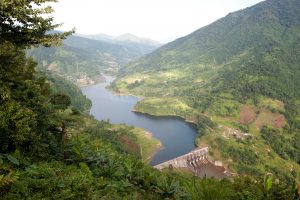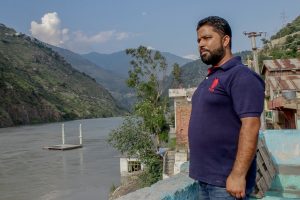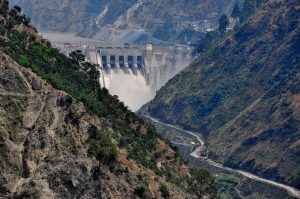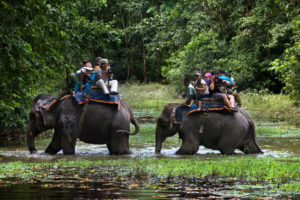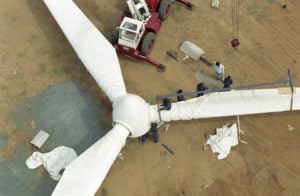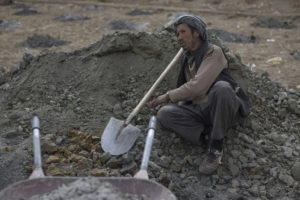On March 23-24, the Permanent Indus Commissioners (PIC) of India and Pakistan met in New Delhi. The commission, tasked with addressing water rights on the Indus river, did not provide Pakistan answers to any of its questions on India’s hydro projects but was an important signal that the two governments have started to talk.
In 1960, Pakistan and India signed an agreement to regulate the use of their shared rivers. The 60-year-old treaty on the Indus river system gives control of the three “eastern” rivers (the Beas, Ravi and Sutlej) to India and the three “western” rivers (the Indus, Chenab and Jhelum) to Pakistan. As long as downstream flow is not affected, each country can use its neighbour’s rivers for hydro projects.
The treaty established the Permanent Indus Commissioners, a delegation of officials from the two countries that meets annually.
The questions are technical, and primarily about two hydroelectricity projects India is building in the Chenab basin: Pakal Dul and Lower Kalnai. Pakistan has been objecting to the designs of these projects for at least seven years, well before the projects got off the ground.
At this week’s meeting, Pakistan’s Indus commissioner Syed Muhammad Meher Ali Shah asked the same questions. India’s Indus commissioner Pradeep Kumar Saxena gave the same answer – no project would harm Pakistan; the details would be provided in good time.
A statement from India’s foreign ministry read, “The Indian side held that these projects are fully compliant with the provisions of the [Indus Waters] Treaty and provided technical data in support of its position. Pakistan side requested India for sharing of information on the design of other Indian hydropower projects being planned to be developed. The Indian side assured that the information will be supplied as and when required to be supplied under the provisions of the Treaty.”
First meeting in two-and-a-half years
The symbolism of the meeting went well beyond this. Under the 1960 Indus Waters Treaty (IWT) between the two countries, the PICs are supposed to meet at least once a year. But India cancelled the 2019 meeting in the wake of a terrorist attack in Pulwama, Kashmir. The 2020 meeting could not be held due to the Covid-19 pandemic. So, the meeting before this one was in Lahore in August 2018. This week’s meeting was announced within days of senior politicians in both countries making pacifying noises after months of tension, and the two armies agreeing to stick once again to a 2003 ceasefire agreement.
Information yet to flow
As for the agenda of the meeting itself, Pakistan is aware that India is sticking to the IWT while building dams in the Indus basin. Under the treaty, Pakistan has primary use of the three western rivers of the basin – Indus, Jhelum and Chenab. But India has the right to store a total of 2.85 million acre feet (MAF) of water in these rivers and their tributaries during the lean non-monsoon months. The figure can go up to 3.7 MAF during the monsoon.
Pakal Dul, the project India is building on the Marusudar river (a tributary of the Chenab) is a storage dam designed to hold 0.09 MAF. Lower Kalnai, on another tributary of the Chenab, is a run-of-the-river project that will not hold water but will significantly impede the flow of sediments. Pakal Dul is designed to generate 1,000 megawatts (MW) and Lower Kalnai 48 MW.
Asked why India had still not provided project details sought by Pakistan, an official of India’s Jal Shakti (water resources) ministry said critical aspects such as the size of the dams may still have to be adjusted.
“The projects are in steep terrain, and there is the slight possibility of soil slippages. If that happens, the engineers may have to adjust the dam height for Pakal Dul or the dam width of Lower Kalnai,” the official said, speaking on the condition of anonymity.
In previous meetings of the PICs, Pakistan had objected to the designs of the Pakal Dul and Lower Kalnai projects. It wanted the height of the Pakal Dul dam to be reduced by five metres from the planned 167 metres. It also wanted the dam to have wider spillways. After the 2018 meeting in Lahore, India invited Pakistani officials to visit Pakal Dul and other project sites, a visit that took place in February 2019. At this week’s meeting, the Pakistani delegation also sought details on two other run-of-the-river hydro projects – Darbuk (19 MW) and Nemochaling (24 MW). Once again, the Indian delegation is reported to have said that the details would be provided later.
India had also stopped providing water flow data to Pakistan after the 2019 terrorist attack in Pulwama. This is of immediate concern to Pakistan because water flow data, especially during the monsoon, enables it to prepare for floods. The Pakistani delegation raised this issue this week and sought daily water flow data from July 1 to October 10 every year.
Though there was no official word on this after the meeting, an Indian bureaucrat said, “The data will be provided this year. I just hope there will be no incident that will vitiate the atmosphere and stop the data flow.”
As for the two main projects in question, work on Lower Kalnai – in Doda district of Jammu and Kashmir – was stalled for years until the government terminated the original construction contract in 2019 and started the process all over again. The company that had the original contract had gone bankrupt.
Pakal Dul is a much larger project being built near Drangdhuran village in Kishtwar district of Jammu and Kashmir, at a cost of INR 8,112 crore (USD 1.1 billion). It is scheduled to be complete by the end of 2023. Quite apart from issues between India and Pakistan, the building of dams in the Himalayas by either country has almost always been opposed by locals displaced by the projects, as well as by environmentalists, who have repeatedly shown that none of the dam projects would pass a holistic cost-benefit analysis. In India, there is now also the question of whether the country should build more power-generation projects when the current installed capacity is about three times the electricity demand.
![<p>The Baglihar dam on the Chenab, in Jammu and Kashmir [Image: ICIMOD]</p>](https://dialogue.earth/content/uploads/2017/07/baglihar-dam.jpg)

